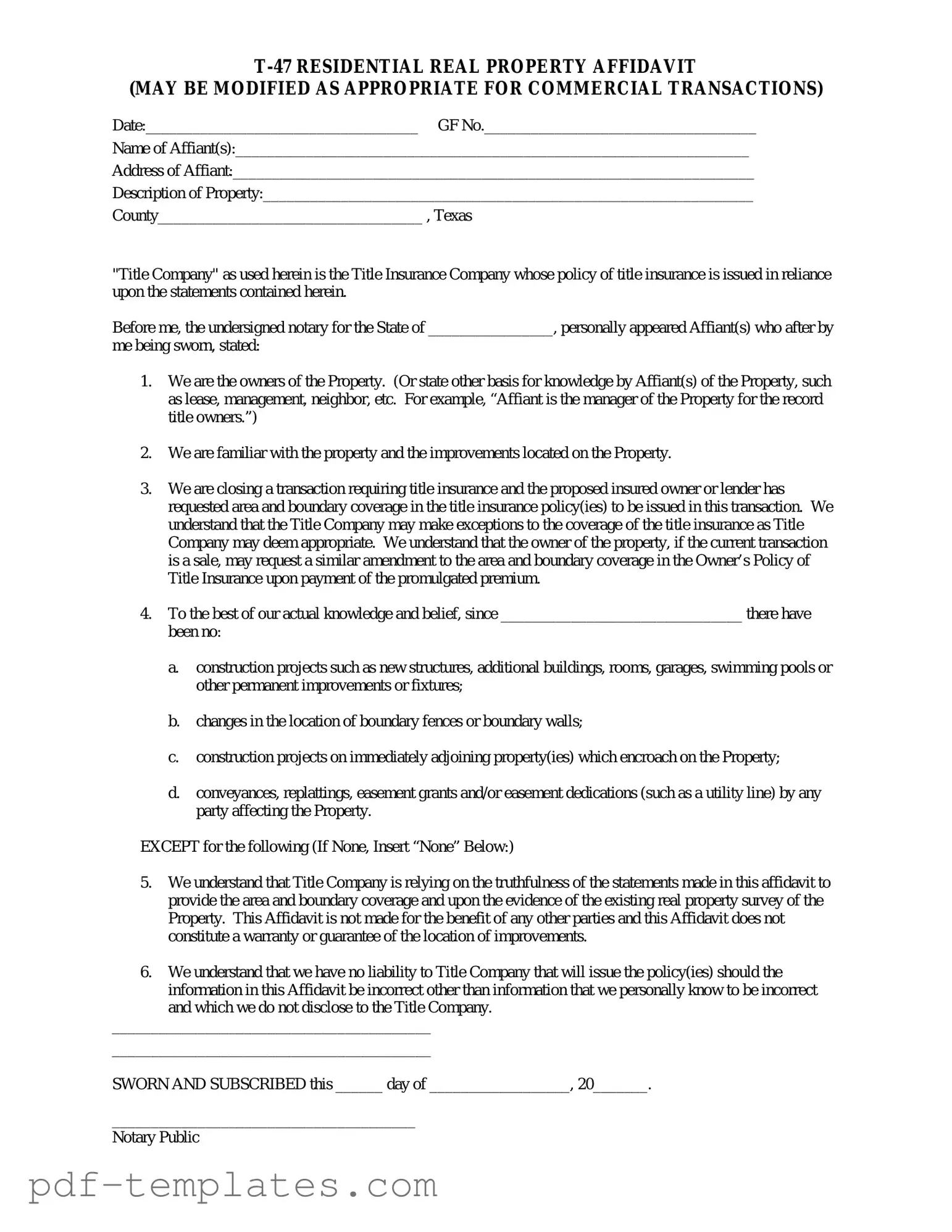The Texas residential property affidavit T-47 form is similar to the Affidavit of Heirship. This document is often used in real estate transactions to establish the rightful heirs of a deceased property owner. Like the T-47, the Affidavit of Heirship provides a declaration that can clarify ownership and assist in the transfer of property rights. Both documents aim to resolve potential disputes regarding ownership and ensure a clear title, making them essential in property transactions involving inheritance.
Another document that shares similarities with the T-47 is the Title Commitment. A Title Commitment outlines the terms under which a title insurance policy will be issued. It includes details about the property, such as legal descriptions and any liens or encumbrances. While the T-47 focuses on affirming facts about the property’s ownership, the Title Commitment serves as a roadmap for the title insurance process, ensuring that all parties understand the current status of the property title.
The Deed of Trust is also comparable to the T-47 form. This document secures a loan with real property as collateral and outlines the responsibilities of the borrower and lender. Similar to the T-47, the Deed of Trust is a critical component in real estate transactions, as it provides assurance to lenders regarding the ownership of the property. Both documents play a vital role in establishing and confirming the legal standing of property ownership and financial obligations.
In California, the importance of well-drafted agreements similar to the T-47 form cannot be understated, especially when it comes to defining relationships in various transactions. A similar structure is seen in documents like the All California Forms, which provide a comprehensive framework for establishing agreements. Such documents ensure that all parties are on the same page regarding ownership, responsibilities, and expectations, thereby minimizing disputes and promoting clarity in dealings.
The Affidavit of Ownership is another document that aligns closely with the T-47. This affidavit is often used to confirm the identity of the property owner and assert their rights to the property. It serves to provide a sworn statement about ownership, much like the T-47, which also verifies the ownership status. Both documents can help prevent disputes and clarify the chain of title, ensuring a smoother transaction process.
Lastly, the Seller’s Disclosure Notice is similar to the T-47 in that it provides important information about the property being sold. This document requires sellers to disclose known issues with the property, including defects or repairs needed. While the T-47 focuses on ownership verification, the Seller’s Disclosure Notice emphasizes transparency regarding the property’s condition. Both documents are essential for protecting the interests of buyers and ensuring informed decision-making in real estate transactions.
